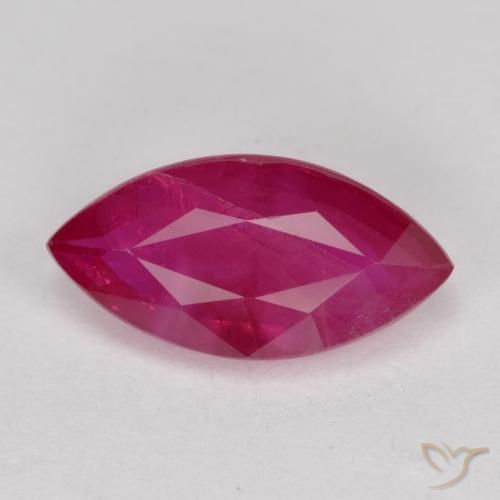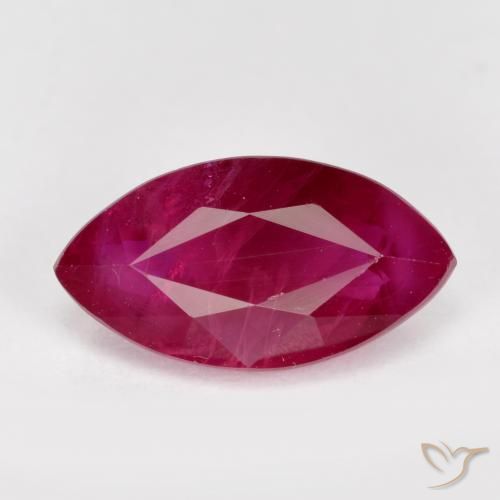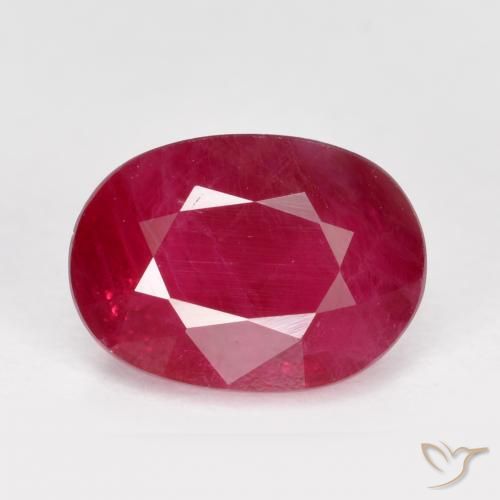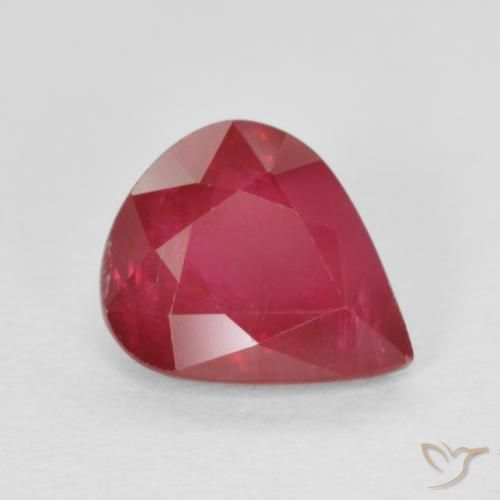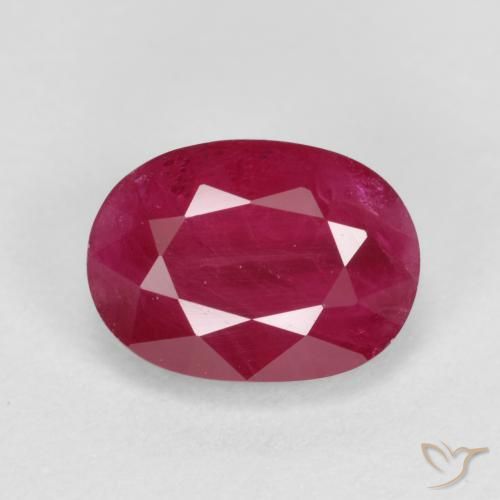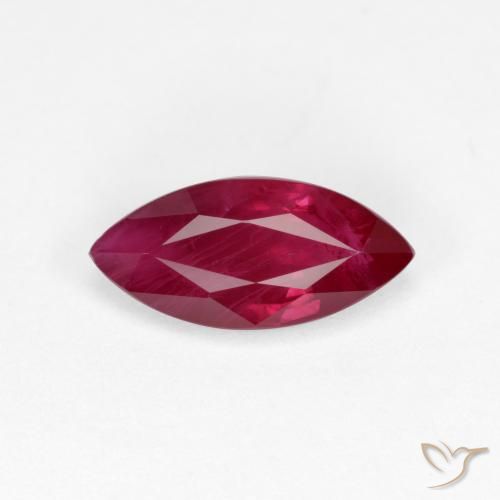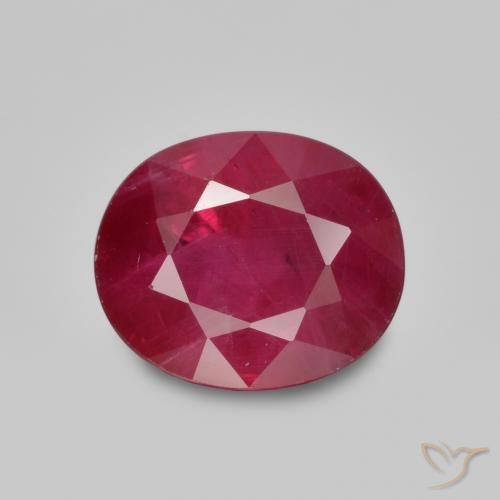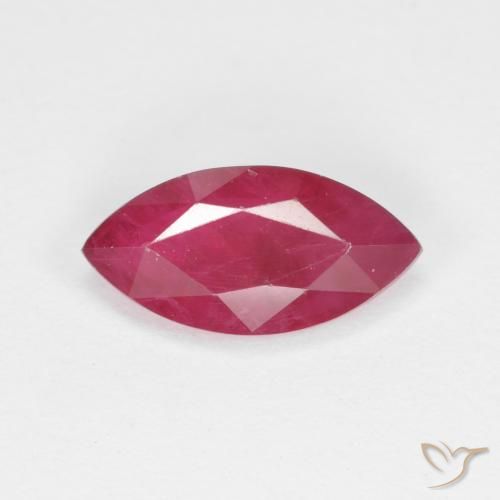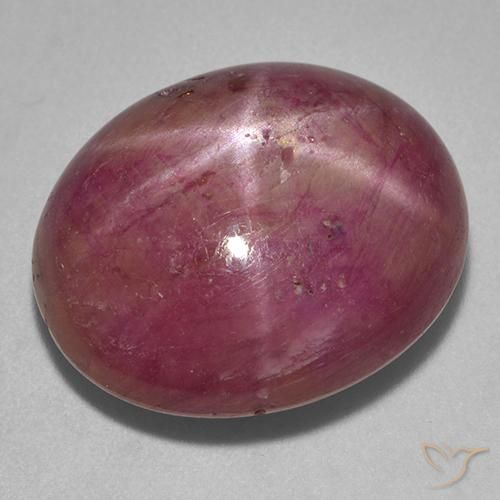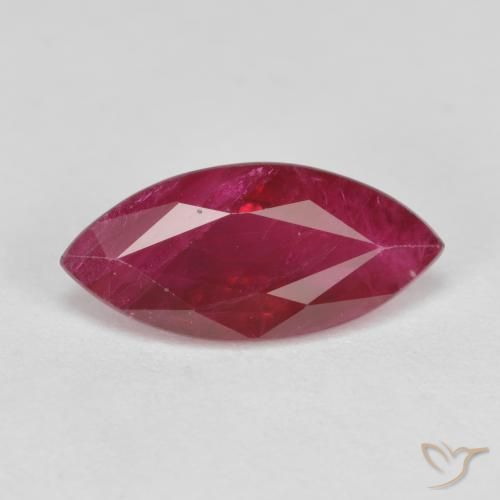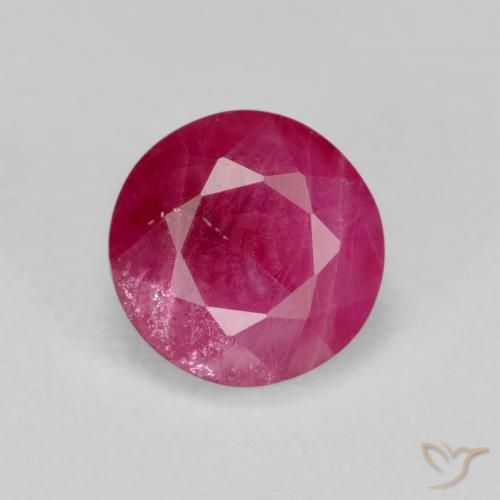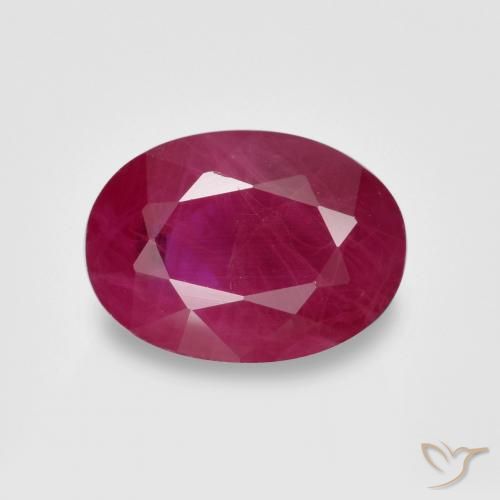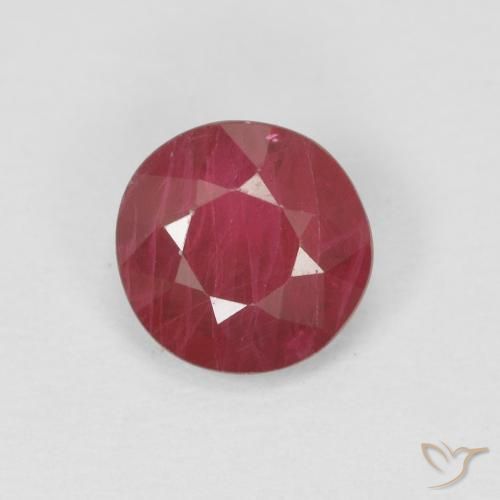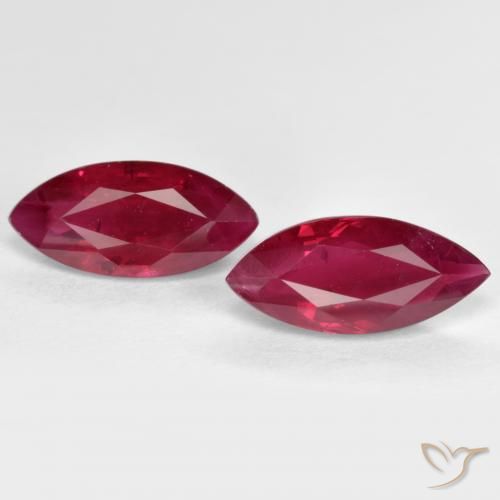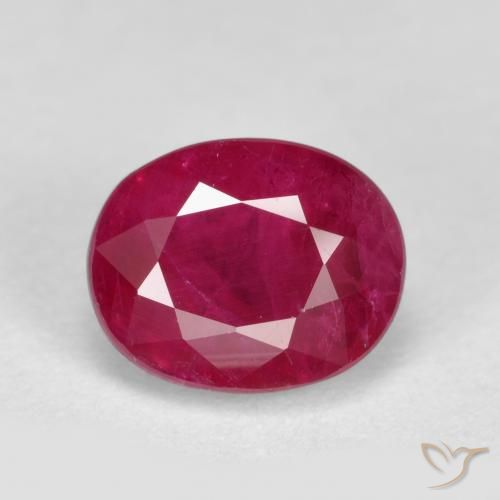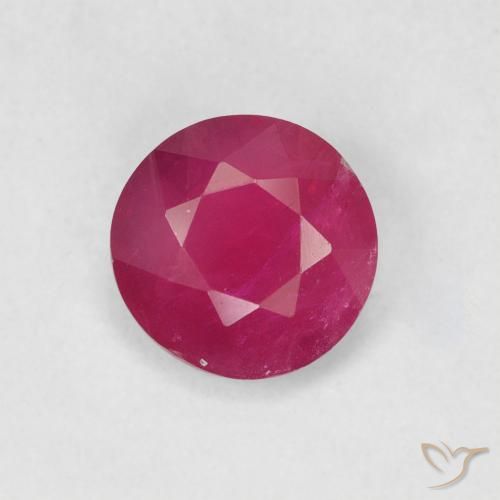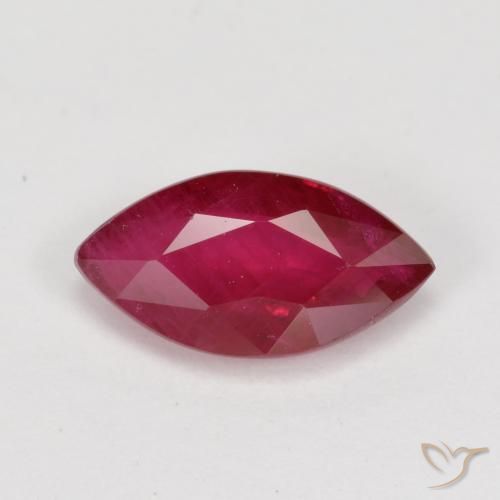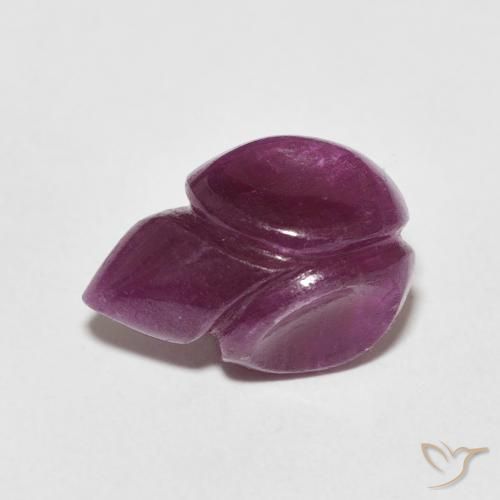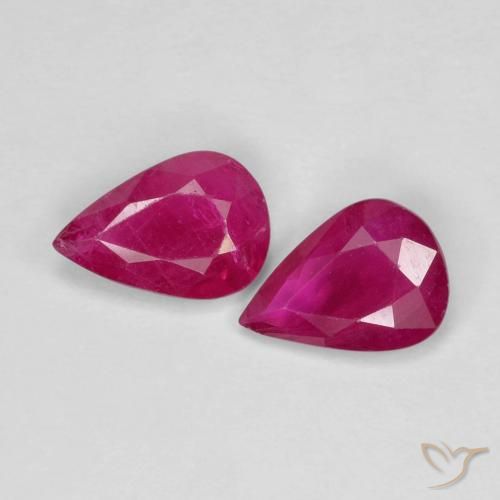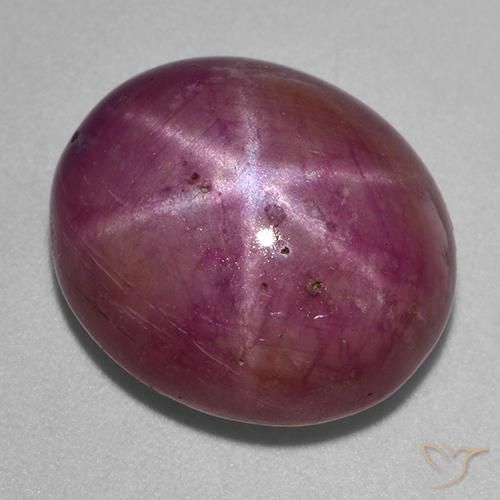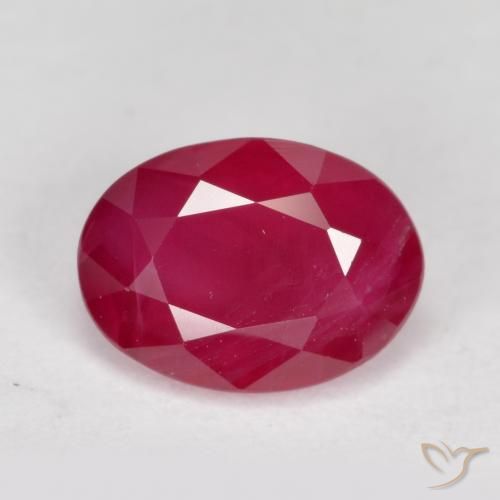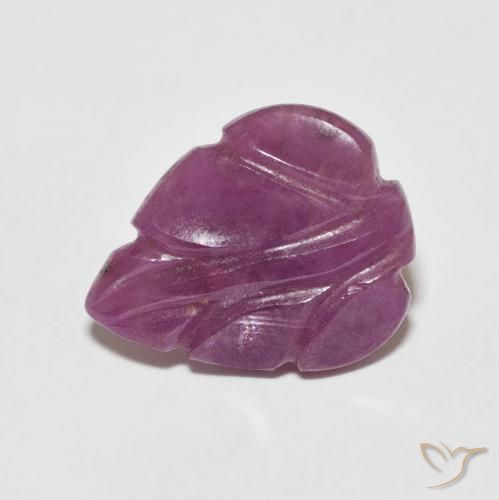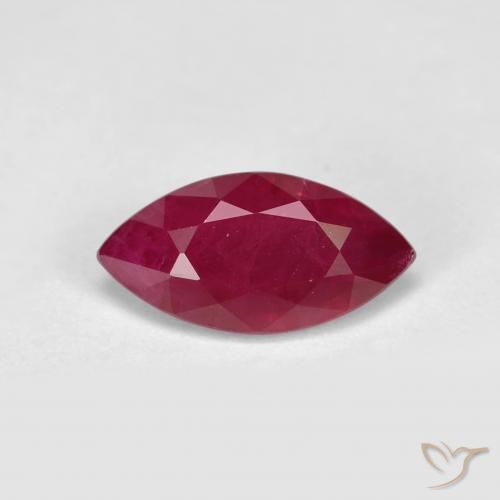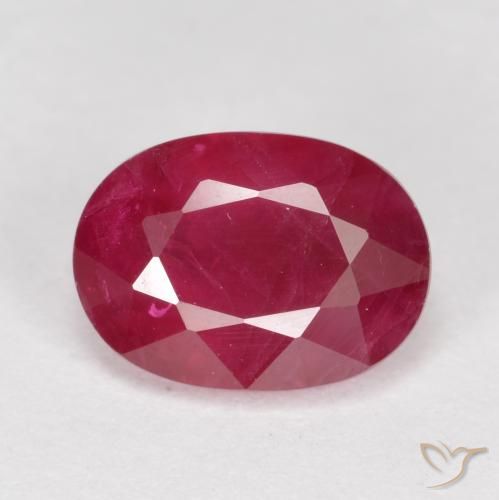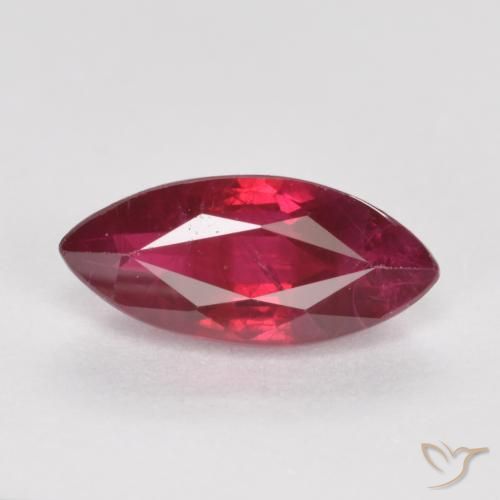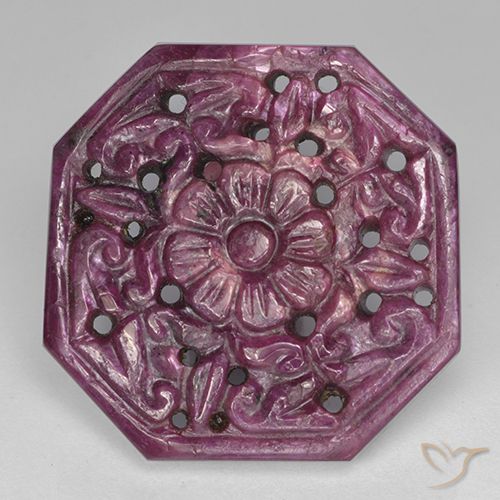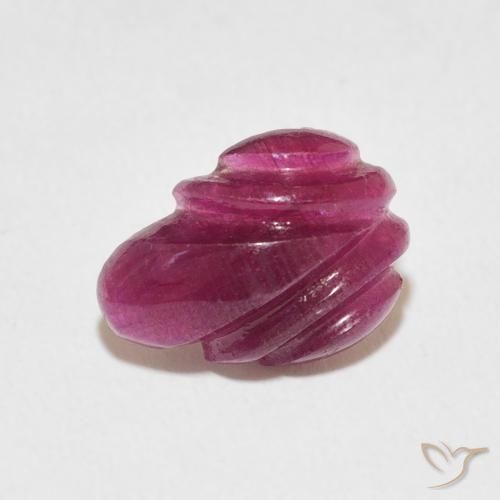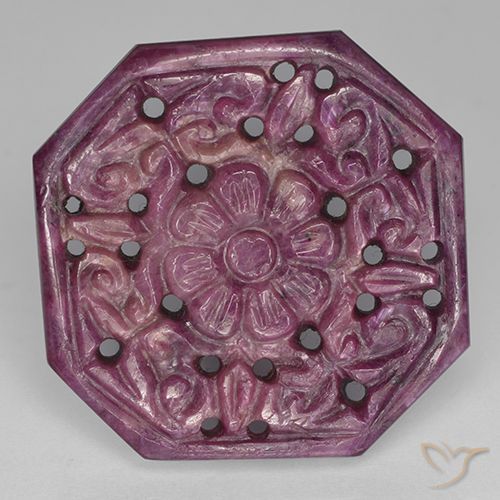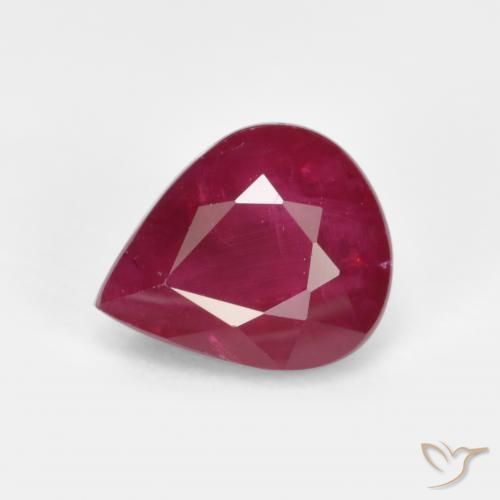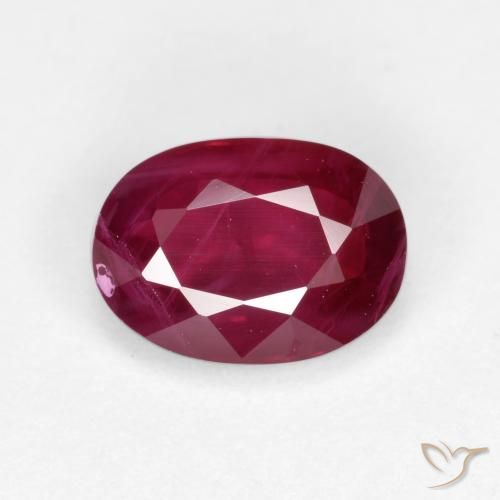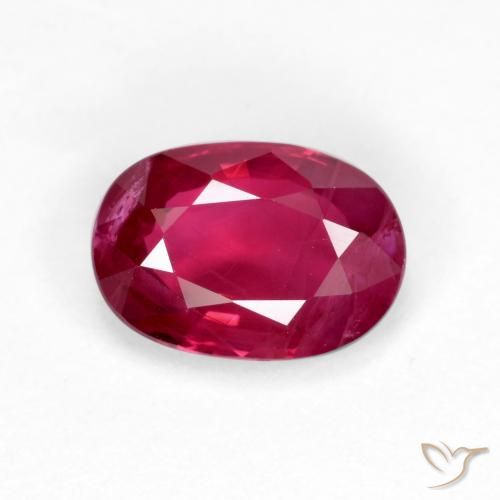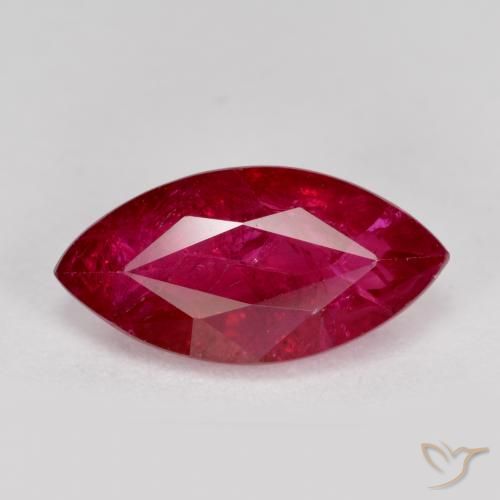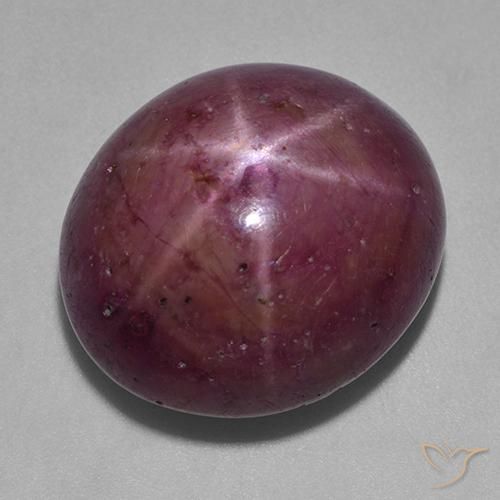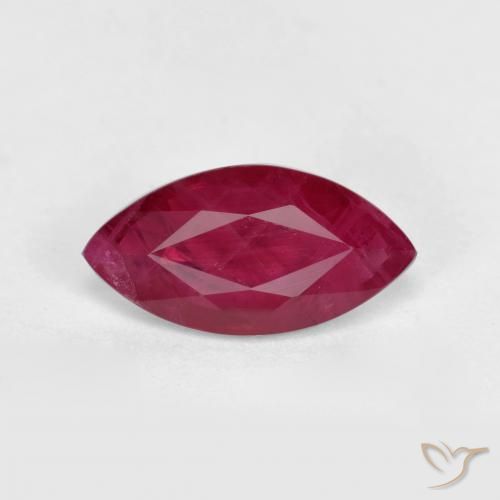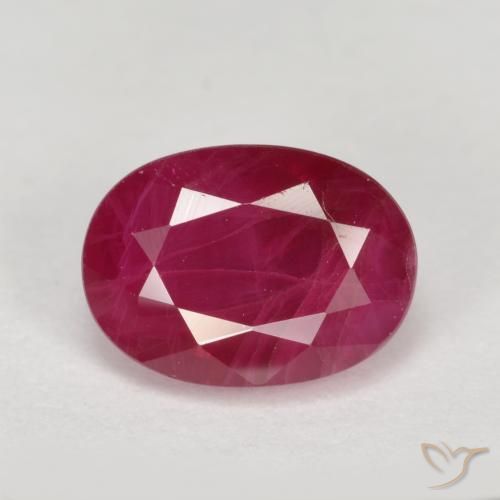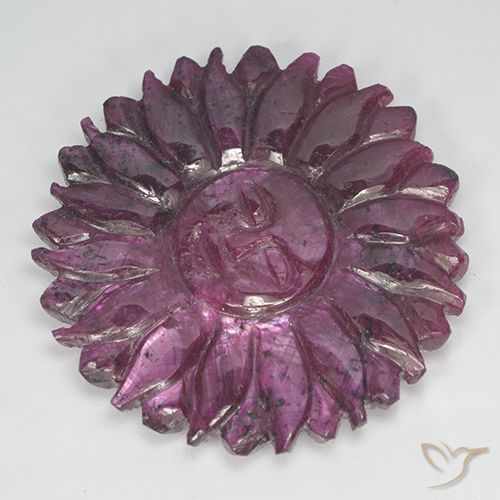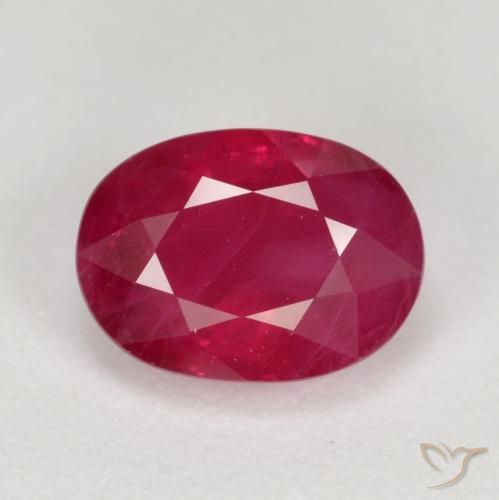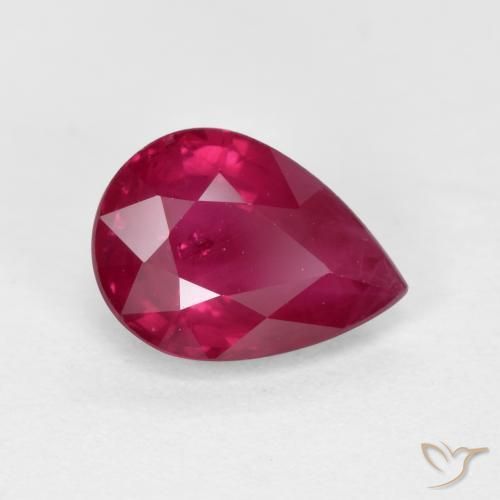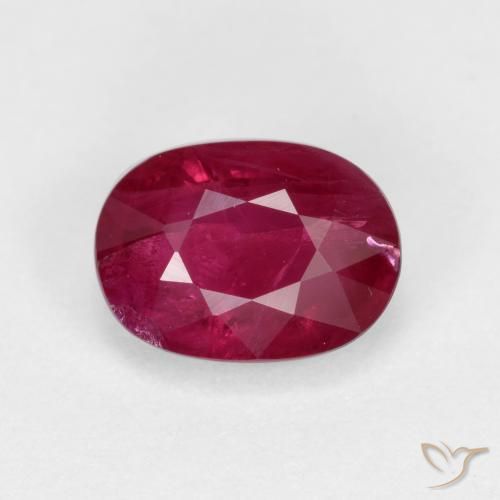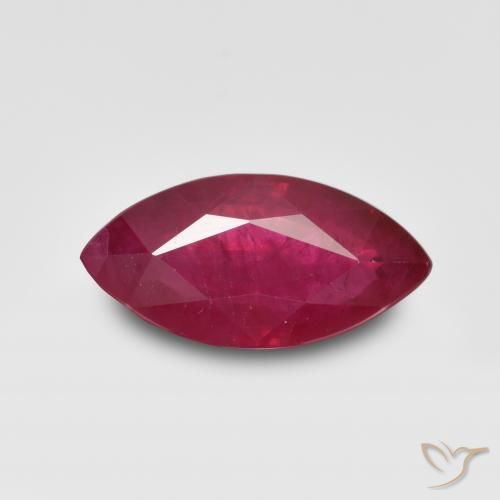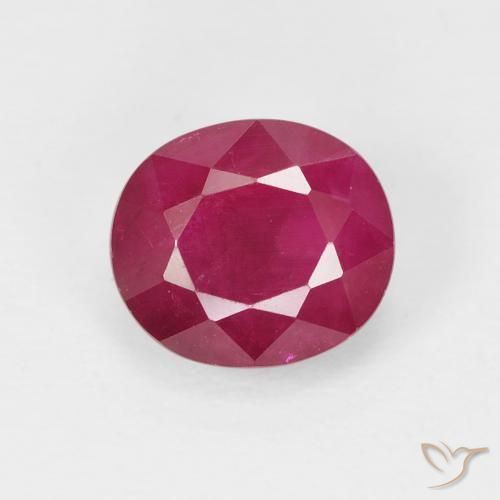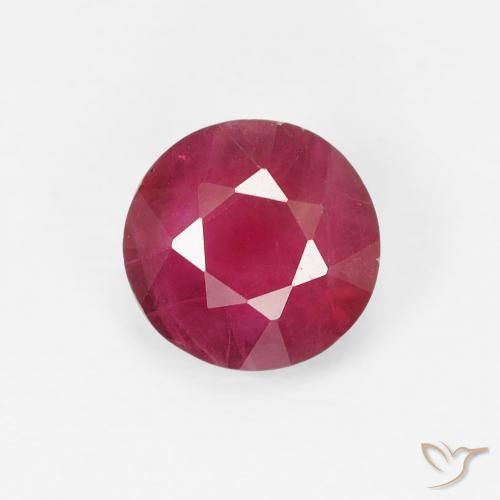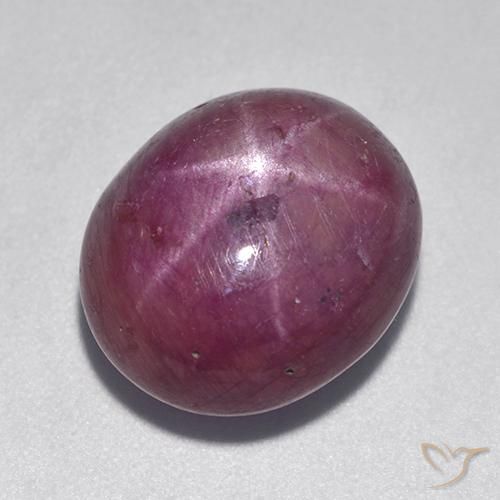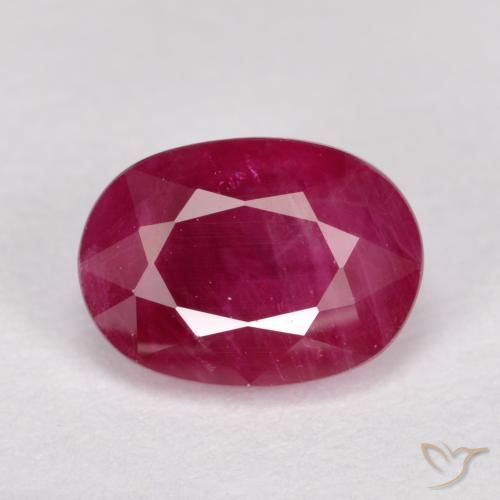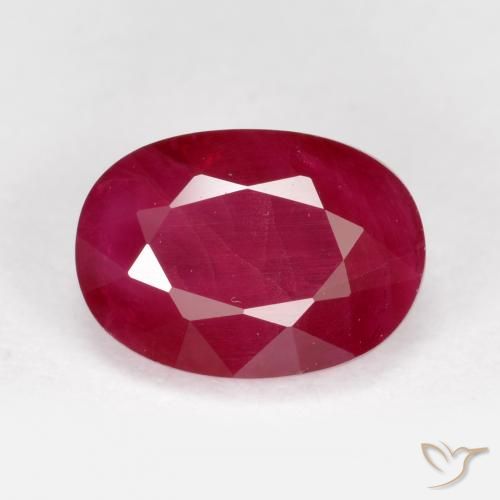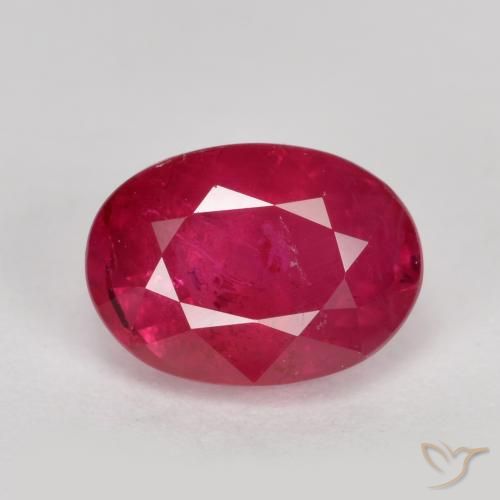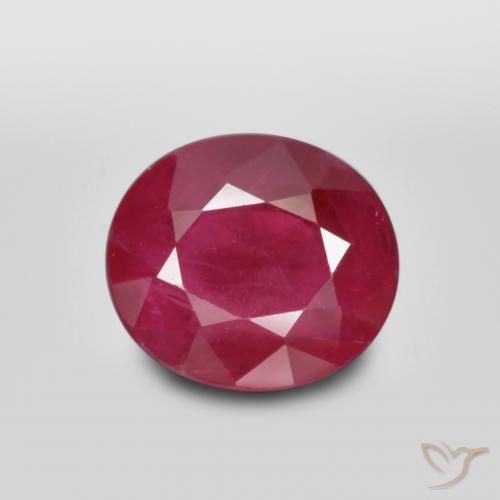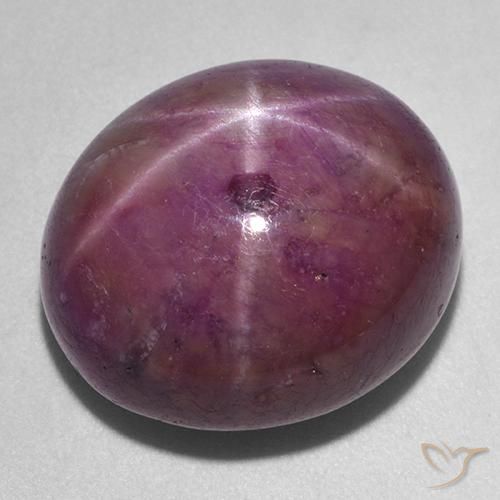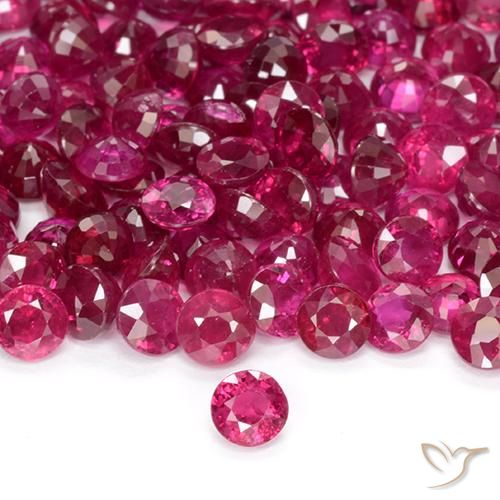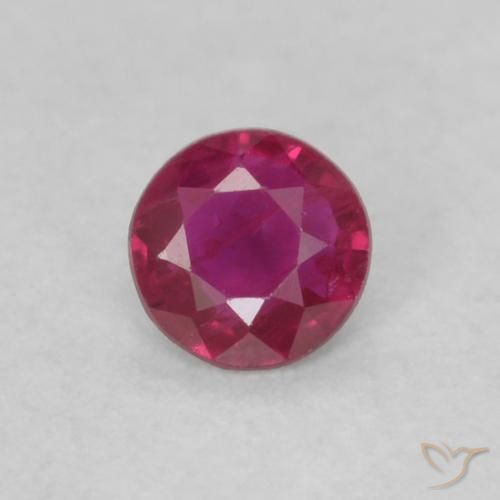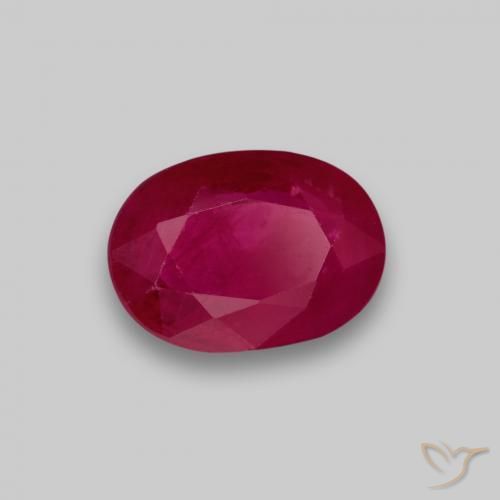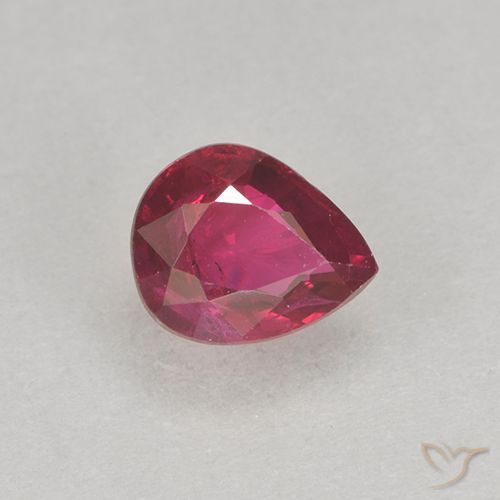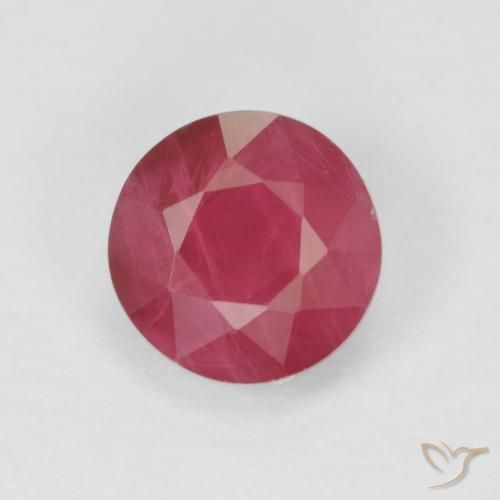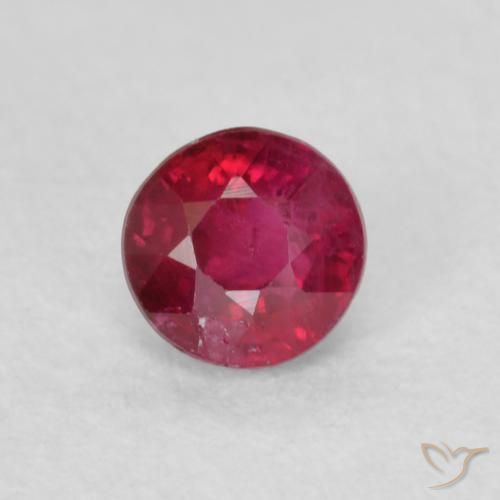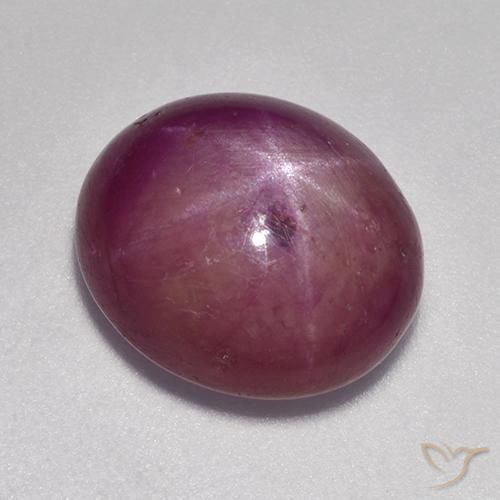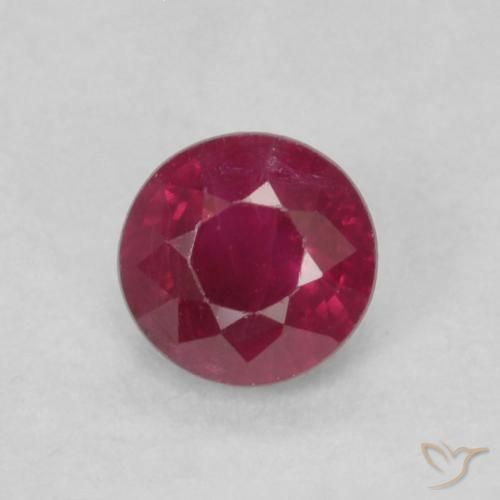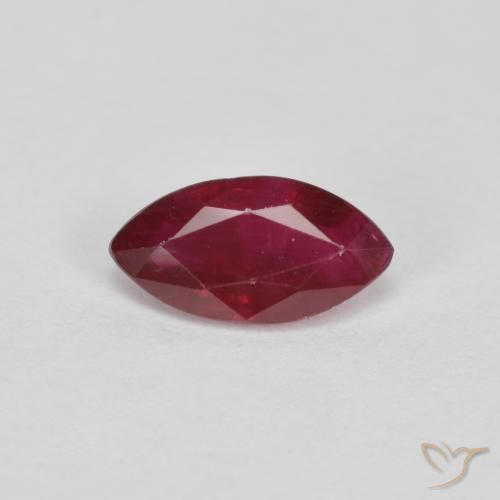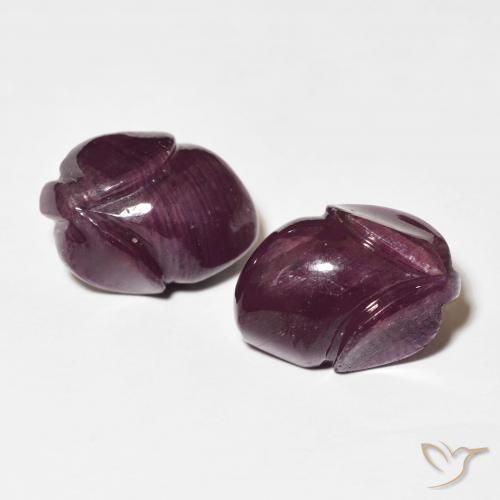Buy Ruby Heat Only Gems
Bi-color
Black
Blue
Brown
Golden
Gray
Green
Multicolor
Orange
Pink
Purple Ruby Heat Only
Red Ruby Heat Only
Turquoise
Violet
White
Yellow
Clear Colors
Single
Pairs
Lots
Faceted
Cabochons
Showing results for
Sort By:
Price - High to Low
Price - Low to High
Size - Largest to Smallest
Size - Smallest to Largest
Weight - High to Low
Weight - Low to High
Gemtypes in Category:
Ruby (657)
Star Ruby (103)
X
Clear All
ID:
567351
Weight:
1.49ct
Size:
10.1 x 5.1 mm
Clarity:
VS-SI
Content:
1 pc
Price:
$
1,147.30
Item in Stock
More Options & Item Details
ID:
567380
Weight:
1.66ct
Size:
9.4 x 5.1 mm
Clarity:
VS-SI
Content:
1 pc
Price:
$
1,162.00
Item in Stock
More Options & Item Details
ID:
567371
Weight:
1.40ct
Size:
7.2 x 5.2 mm
Clarity:
VS-SI
Content:
1 pc
Price:
$
1,293.60
Item in Stock
More Options & Item Details
ID:
567365
Weight:
1.19ct
Size:
7.1 x 6 mm
Clarity:
VS-SI
Content:
1 pc
Price:
$
916.30
Item in Stock
More Options & Item Details
ID:
569899
Weight:
1.26ct
Size:
7.2 x 5.2 mm
Clarity:
SI
Content:
1 pc
Price:
$
928.65
Item in Stock
More Options & Item Details
ID:
570375
Weight:
1.10ct
Size:
9.5 x 4.5 mm
Clarity:
VS-SI
Content:
1 pc
Price:
$
945.40
Item in Stock
More Options & Item Details
ID:
569430
Weight:
1.41ct
Size:
6.7 x 5.6 mm
Clarity:
VS-SI
Price:
$
1,039.20
Item in Stock
More Options & Item Details
Select
1
2
3
pcs 0 in Cart
ID:
575955
Weight:
1.50ct
Size:
10.4 x 5.2 mm
Clarity:
VS-SI
Content:
1 pc
Price:
$
1,219.90
Item in Stock
More Options & Item Details
ID:
522390
Weight:
23.05ct
Size:
18.5 x 15.6 mm
Clarity:
Opaque
Content:
1 pc
Price:
$
304.26
Item in Stock
More Options & Item Details
ID:
575954
Weight:
1.80ct
Size:
11.6 x 5.4 mm
Clarity:
VS-SI
Content:
1 pc
Price:
$
1,463.87
Item in Stock
More Options & Item Details
ID:
537727
Weight:
1.14ct
Size:
6.5 mm (calibrated)
Clarity:
SI
Content:
1 pc
Price:
$
393.38
Item in Stock
More Options & Item Details
ID:
567382
Weight:
1.33ct
Size:
7.2 x 5.2 mm
Clarity:
VS-SI
Content:
1 pc
Price:
$
1,024.10
Item in Stock
More Options & Item Details
ID:
496625
Weight:
0.87ct
Size:
5.5 mm (calibrated)
Clarity:
VS-SI
Content:
1 pc
Price:
$
321.55
Item in Stock
More Options & Item Details
ID:
569928
Weight:
2.43ct (total)
Size:
9.7 x 4.5 mm
Clarity:
SI
Content:
2 pcs
Price:
$
1,790.97
Item in Stock
More Options & Item Details
ID:
569896
Weight:
1.35ct
Size:
6.8 x 5.5 mm
Clarity:
SI
Price:
$
994.98
Item in Stock
More Options & Item Details
Select
1
2
3
pcs 0 in Cart
ID:
495152
Weight:
0.78ct
Size:
5.5 mm (calibrated)
Clarity:
VS-SI
Content:
1 pc
Price:
$
279.58
Item in Stock
More Options & Item Details
ID:
570794
Weight:
1.07ct
Size:
9 x 4.7 mm
Clarity:
VS-SI
Price:
$
836.01
Item in Stock
More Options & Item Details
ID:
691783
Weight:
3.38ct
Size:
12.3 x 8.7 mm
Clarity:
Opaque
Content:
1 pc
Price:
$
67.60
Item in Stock
More Options & Item Details
ID:
646715
Weight:
1.22ct (total)
Size:
7 x 5 mm (calibrated)
Clarity:
VS
Content:
2 pcs
Price:
$
854.00
Item in Stock
More Options & Item Details
ID:
522395
Weight:
17.99ct
Size:
16.2 x 14.3 mm
Clarity:
Opaque
Content:
1 pc
Price:
$
237.47
Item in Stock
More Options & Item Details
ID:
567359
Weight:
1.15ct
Size:
7 x 5 mm (calibrated)
Clarity:
VS-SI
Content:
1 pc
Price:
$
885.50
Item in Stock
More Options & Item Details
ID:
691792
Weight:
3.36ct
Size:
13.1 x 10.5 mm
Clarity:
Opaque
Content:
1 pc
Price:
$
67.20
Item in Stock
More Options & Item Details
ID:
402467
Weight:
1.84ct
Size:
10.8 x 5.6 mm
Clarity:
VS-SI
Content:
1 pc
Price:
$
1,288.00
Item in Stock
More Options & Item Details
ID:
567373
Weight:
1.23ct
Size:
7 x 5 mm (calibrated)
Clarity:
VS-SI
Content:
1 pc
Price:
$
947.10
Item in Stock
More Options & Item Details
ID:
569889
Weight:
1.06ct
Size:
9.1 x 4.1 mm
Clarity:
SI
Content:
1 pc
Price:
$
781.24
Item in Stock
More Options & Item Details
ID:
501441
Weight:
46.86ct
Size:
29 x 28.9 mm
Clarity:
Opaque
Content:
1 pc
Price:
$
993.90
Item in Stock
More Options & Item Details
ID:
691020
Weight:
2.88ct
Size:
11.1 x 8.2 mm
Clarity:
Opaque
Content:
1 pc
Price:
$
69.12
Item in Stock
More Options & Item Details
ID:
501440
Weight:
46.06ct
Size:
28.9 x 28.8 mm
Clarity:
Opaque
Content:
1 pc
Price:
$
1,074.62
Item in Stock
More Options & Item Details
ID:
569917
Weight:
1.28ct
Size:
6.7 x 5.6 mm
Clarity:
VS-SI
Content:
1 pc
Price:
$
943.39
Item in Stock
More Options & Item Details
ID:
570372
Weight:
1.22ct
Size:
7 x 5 mm (calibrated)
Clarity:
VS-SI
Content:
1 pc
Price:
$
1,048.53
Item in Stock
More Options & Item Details
ID:
570369
Weight:
1.05ct
Size:
7 x 5 mm (calibrated)
Clarity:
VS-SI
Content:
1 pc
Price:
$
902.43
Item in Stock
More Options & Item Details
ID:
567366
Weight:
1.82ct
Size:
10.5 x 5.3 mm
Clarity:
SI
Content:
1 pc
Price:
$
1,681.68
Item in Stock
More Options & Item Details
ID:
522969
Weight:
35.51ct
Size:
19.9 x 17.4 mm
Clarity:
Opaque
Content:
1 pc
Price:
$
468.73
Item in Stock
More Options & Item Details
ID:
570374
Weight:
1.18ct
Size:
10.1 x 5.3 mm
Clarity:
VS-SI
Content:
1 pc
Price:
$
1,216.99
Item in Stock
More Options & Item Details
ID:
569711
Weight:
1.27ct
Size:
7.2 x 5.2 mm
Clarity:
VS-SI
Content:
1 pc
Price:
$
936.02
Item in Stock
More Options & Item Details
ID:
501424
Weight:
41.80ct
Size:
32.8 x 32.5 mm
Clarity:
Opaque
Content:
1 pc
Price:
$
975.24
Item in Stock
More Options & Item Details
ID:
569717
Weight:
1.32ct
Size:
7 x 5 mm (calibrated)
Clarity:
VS-SI
Content:
1 pc
Price:
$
884.43
Item in Stock
More Options & Item Details
ID:
570200
Weight:
1.01ct
Size:
7 x 5 mm (calibrated)
Clarity:
VS-SI
Content:
1 pc
Price:
$
868.04
Item in Stock
More Options & Item Details
ID:
570373
Weight:
1.22ct
Size:
7 x 5 mm (calibrated)
Clarity:
VS-SI
Content:
1 pc
Price:
$
1,258.24
Item in Stock
More Options & Item Details
ID:
569881
Weight:
1.24ct
Size:
9.2 x 4.6 mm
Clarity:
VS-SI
Content:
1 pc
Price:
$
1,096.68
Item in Stock
More Options & Item Details
ID:
567356
Weight:
1.59ct
Size:
6.9 x 6.1 mm
Clarity:
VS-SI
Content:
1 pc
Price:
$
1,224.30
Item in Stock
More Options & Item Details
ID:
537545
Weight:
0.93ct
Size:
5.7 mm
Clarity:
VS-SI
Content:
1 pc
Price:
$
320.91
Item in Stock
More Options & Item Details
ID:
575953
Weight:
1.73ct
Size:
8.4 x 7.2 mm
Clarity:
VS-SI
Content:
1 pc
Price:
$
1,406.94
Item in Stock
More Options & Item Details
ID:
523437
Weight:
12.08ct
Size:
14 x 12 mm (calibrated)
Clarity:
Opaque
Content:
1 pc
Price:
$
159.46
Item in Stock
More Options & Item Details
ID:
569902
Weight:
1.29ct
Size:
7 x 5 mm (calibrated)
Clarity:
VS-SI
Content:
1 pc
Price:
$
950.76
Item in Stock
More Options & Item Details
ID:
567370
Weight:
1.28ct
Size:
7 x 5 mm (calibrated)
Clarity:
VS-SI
Content:
1 pc
Price:
$
985.60
Item in Stock
More Options & Item Details
ID:
567350
Weight:
1.37ct
Size:
7 x 5 mm (calibrated)
Clarity:
VS-SI
Content:
1 pc
Price:
$
959.00
Item in Stock
More Options & Item Details
ID:
569422
Weight:
1.35ct
Size:
6.6 x 5.8 mm
Clarity:
SI
Content:
1 pc
Price:
$
1,193.98
Item in Stock
More Options & Item Details
ID:
514438
Weight:
avg. 0.34 ct / each
Size:
5 x 4 mm (calibrated)
Clarity:
VS-SI
Price:
$
92.87
Item in Stock
More Options & Item Details
Select
1
2
3
4
5
6
7
8
9
10
11
pcs
ID:
522964
Weight:
36.24ct
Size:
19.2 x 16.7 mm
Clarity:
Opaque
Content:
1 pc
Price:
$
574.04
Item in Stock
More Options & Item Details
ID:
508420
Weight:
avg. 0.23 ct / each
Size:
3.5 mm (calibrated)
Clarity:
VS-SI
Price:
$
43.33
Item in Stock
More Options & Item Details
Select
1
2
3
4
5
6
7
8
9
10
11
12
13
14
15
16
17
18
19
20
21
22
23
24
25
26
27
28
29
30
31
32
33
34
35
36
37
38
39
40
41
42
43
44
45
46
47
48
49
50
51
52
53
54
55
56
57
58
59
60
61
62
63
64
65
66
67
68
69
70
71
72
73
74
75
76
77
78
79
80
81
82
83
84
85
86
87
88
89
90
91
92
93
94
95
96
97
98
99
100
101
102
103
104
105
106
107
108
109
110
111
112
113
114
115
116
117
118
119
120
121
122
123
124
125
126
127
128
129
130
131
132
133
134
135
136
137
138
139
140
141
142
143
144
145
146
147
148
149
150
151
152
153
154
155
156
157
158
159
160
161
162
163
164
165
166
167
168
169
170
171
172
173
174
175
176
177
178
179
180
181
182
183
184
185
186
187
188
189
190
191
192
193
194
195
196
197
198
199
200
201
202
203
204
205
206
207
208
209
210
211
212
213
214
215
216
217
218
219
220
221
222
223
224
225
226
227
228
229
230
231
232
233
234
235
236
237
238
239
240
241
242
243
244
245
246
247
248
249
250
251
252
253
254
255
256
257
258
259
260
261
262
263
264
265
266
267
268
269
270
271
272
273
274
275
276
277
278
279
280
281
282
283
284
285
286
287
288
289
290
291
292
293
294
295
296
297
298
299
300
301
302
303
304
305
306
307
308
309
310
311
312
313
314
315
316
317
318
319
320
321
322
323
324
325
326
327
328
329
330
331
332
333
334
335
336
337
338
339
340
341
342
343
344
pcs
ID:
705241
Weight:
0.16ct
Size:
3.5 mm (calibrated)
Clarity:
VS
Content:
1 pc
Price:
$
63.58
Item in Stock
More Options & Item Details
ID:
567386
Weight:
1.07ct
Size:
7 x 5 mm (calibrated)
Clarity:
VS-SI
Content:
1 pc
Price:
$
823.90
Item in Stock
More Options & Item Details
ID:
503017
Weight:
0.34ct
Size:
4.8 x 3.9 mm
Clarity:
VS-SI
Content:
1 pc
Price:
$
134.64
Item in Stock
More Options & Item Details
ID:
496647
Weight:
1.05ct
Size:
6 mm (calibrated)
Clarity:
VS-SI
Content:
1 pc
Price:
$
388.08
Item in Stock
More Options & Item Details
ID:
705366
Weight:
0.30ct
Size:
3.5 mm (calibrated)
Clarity:
SI-I1
Content:
1 pc
Price:
$
99.33
Item in Stock
More Options & Item Details
ID:
522109
Weight:
9.23ct
Size:
13 x 11 mm (calibrated)
Clarity:
Opaque
Content:
1 pc
Price:
$
146.21
Item in Stock
More Options & Item Details
ID:
705318
Weight:
0.32ct
Size:
4 mm (calibrated)
Clarity:
SI
Price:
$
127.15
Item in Stock
More Options & Item Details
ID:
575949
Weight:
0.94ct
Size:
8.5 x 4.4 mm
Clarity:
VS-SI
Content:
1 pc
Price:
$
917.36
Item in Stock
More Options & Item Details
ID:
691125
Weight:
19.48ct (total)
Size:
15 x 10.8 mm
Clarity:
Opaque
Content:
2 pcs
Price:
$
467.52
Item in Stock
More Options & Item Details
GemSelect Certified Store ReviewsGemSelect: Over 22 Years in the Gemstone Business! Thank you for trusting us with your purchase!
Overall Rating -> 9
Nothing bad to report. Everything is as expected. The gems and the price are all very good.
Posted By Dafanatic in August, 2025
Source: Bizrate
Overall Rating -> 9
I did not realize these stones were of jewelry quality. They are really beautiful, just not what I was expecting which was more of a natural stone.
Posted By Jewelry Quality Stones in July, 2025
Source: Bizrate
Overall Rating -> 10
I have purchased stones from gem select in the past and have been very satisfied. I expect to repeat that experience with this purchase as well
Posted By Marti in July, 2025
Source: Bizrate
Overall Rating -> 10
Great selection. Maybe too great i kept adding and deleting stuff because i found better looking ones
Posted By Edsor works in October, 2025
Source: Bizrate
Overall Rating -> 10
there are a large number of gems to choose from i have ordered before and these objects are precious to me that my light reflect in them and fills the stones they are there when i need to reflect on life
Posted By Kickbass.2 in January, 2025
Source: Bizrate
Overall Rating -> 10
looked at pink stones and at sapphires bought some sapphires. I love looking and collecting gemstones.
.
Posted By Steven M. in February, 2025
Source: Bizrate
Overall Rating -> 9
I love the gems!
Posted By MM in April, 2025
Source: Bizrate
Overall Rating -> 10
IT WAS GREAT SIMPLE I WAS ABLE TO MAKE AN ACCOUNT EASY AND WAS ABLE TO FAVORITE ALL OF MY FINAL SELECTED GEMS, I JUST LOVE IT.
Posted By YE in October, 2025
Source: Bizrate
Overall Rating -> 10
I was looking for a site with every type of gem I could want for setting in luxury blades and assumed I would need to look outside the US, but GemSelect made it easy to get everything I wanted without leaving the house! Wide enough selection that I do not feel the need to look elsewhere and pricing the same.
Posted By Razormane in April, 2025
Source: Bizrate
![]()
![]()
![]()
![]()
![]()
![]()
![]()
![]()
![]()

